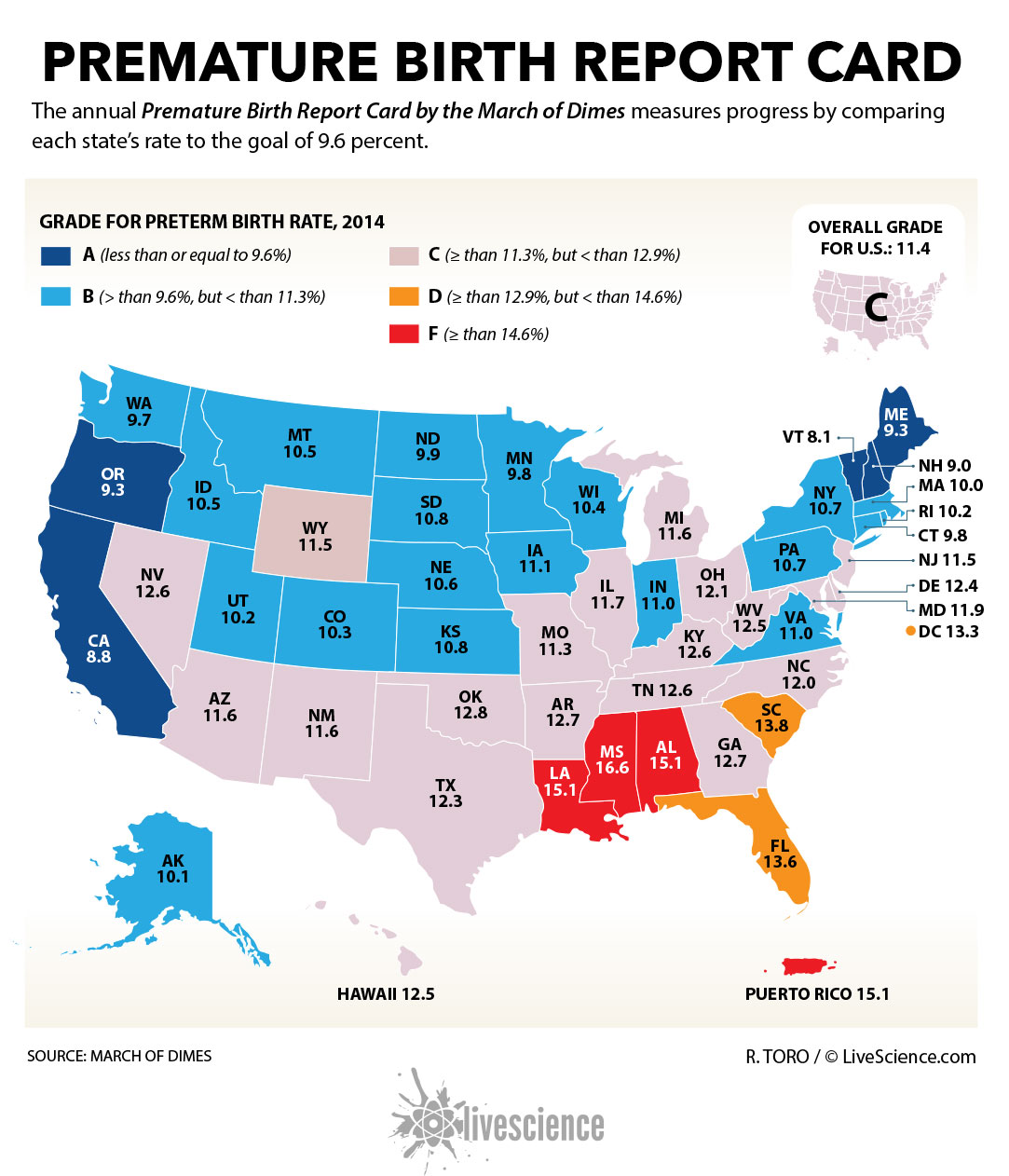US Preterm Birth Rate Drops to 17-Year Low

The percentage of babies born prematurely in the United States dropped again last year, reaching a 17-year low, according to a new report.
In 2013, the U.S. preterm birth rate was 11.4 percent, down slightly from the 11.5 percent of babies who were born preterm the year before, according to the report from the charity organization March of Dimes.
Babies are considered preterm if they are born before 37 weeks of pregnancy.
The U.S. preterm birth rate rose in the 1990s and peaked in 2006 (at 12.8 percent), but has declined each year since, resulting in an estimated 231,000 fewer babies born preterm over the last seven years than would have been born if the U.S. had maintained its 2006 rate, the March of Dimes said. [7 Baby Myths Debunked]
Part of the reason for the recent decline may be efforts to reduce elective cesarean sections (those that are not medically necessary) before 39 weeks of pregnancy, as well as better access to maternity care and a reduction in smoking among women, the March of Dimes said. (Smoking is a risk factor for preterm birth.)
The U.S. Department of Health and Human Services (HHS) set a public health goal for the nation's preterm birth rate, which was 11.4 percent by the year 2020. The country has now met that goal seven years early.
Still, the March of Dimes says more work is needed, and the organization gave the United States a "C" grade on its annual report card of the nation's preterm birth rate. The country fell short of meeting the more challenging goal set by the organization — a preterm birth rate of 9.6 percent.
Get the world’s most fascinating discoveries delivered straight to your inbox.
"The U.S. still has one of the highest rates of preterm birth of any high-resource country, and we must change that," Jennifer L. Howse, president of the March of Dimes, said in a statement.
The report card also gives each state a grade, based on how close its preterm birth rate comes to meeting the 9.6 percent goal.
On this year's report card, five states — Iowa, Virginia, Arkansas, Nevada and Oklahoma — earned better grades than they did on last year's report card.
Five states earned an "A" grade (California, Maine, New Hampshire, Oregon and Vermont), 20 states earned a "B" grade, another 20 states earned a "C" grade and two states received a "D" grade. The three states that received an "F" grade were Alabama (with a preterm birth rate of 15.1 percent), Louisiana (also with 15.1 percent) and Mississippi (with a rate of 16.6 percent).
Preterm birth is the leading cause of newborn death, and it can lead to complications such as breathing problems, jaundice, developmental delays, vision loss and cerebral palsy, the March of Dimes said.
Follow Rachael Rettner @Rachael Rettner. Follow Live Science @livescience, Facebook & Google+. Original article on Live Science

Rachael is a Live Science contributor, and was a former channel editor and senior writer for Live Science between 2010 and 2022. She has a master's degree in journalism from New York University's Science, Health and Environmental Reporting Program. She also holds a B.S. in molecular biology and an M.S. in biology from the University of California, San Diego. Her work has appeared in Scienceline, The Washington Post and Scientific American.


